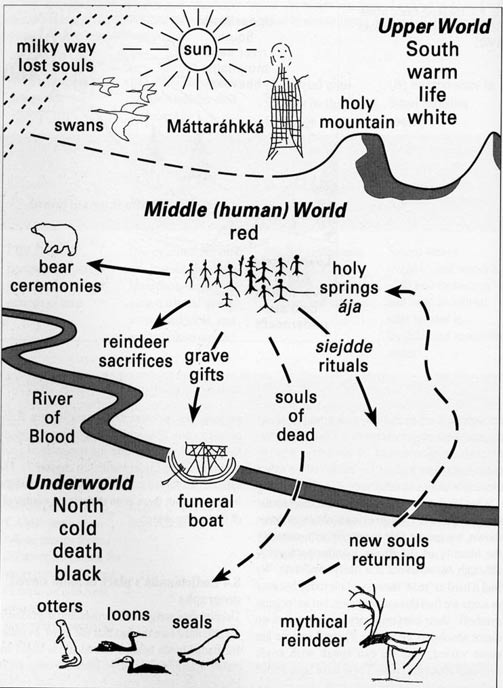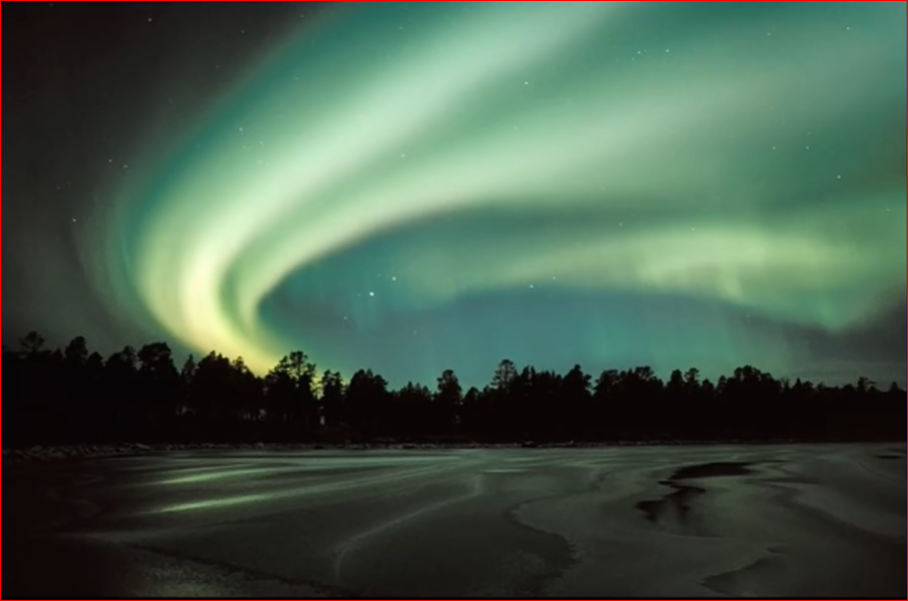- Home
- Process Worldview
- Community
- Art and Music
- Whitehead and Process Thinking
- Podcasts
- Spirituality
- Ecological Civilization
- Education
- Contact
- Social Justice
- Science
- Animals
- Sacred Poems
- Whitehead Videos
- Index of All Titles
- Practicing Process Thought
- Process Spirituality: A Spiritual Alphabet
- Recent Posts
Yoik Songs
"A joik or yoik..is a traditional form of song in Sami music performed by the people of Sapmi in Northern Europe. A performer of joik is called a joikaaja (in Finnish), a joiker (in Norwegian, and anglicised) or jojkare (in Swedish). Originally, joik referred to only one of several Sami singing styles, but in English the word is often used to refer to all types of traditional Sami singing. As an art form, each joik is meant to reflect or evoke a person, animal, or place." - Wikipedia
“A yoik is not merely a description; it attempts to capture its subject in its entirety: it's like a holographic, multi-dimensional living image, a replica, not just a flat photograph or simple visual memory. It is not about something, it is that something. It does not begin and it does not end. A yoik does not need to have words — its narrative is in its power, it can tell a life story in song. The singer can tell the story through words, melody, rhythm, expressions or gestures.” —Ursula Länsman
“A yoik is not merely a description; it attempts to capture its subject in its entirety: it's like a holographic, multi-dimensional living image, a replica, not just a flat photograph or simple visual memory. It is not about something, it is that something. It does not begin and it does not end. A yoik does not need to have words — its narrative is in its power, it can tell a life story in song. The singer can tell the story through words, melody, rhythm, expressions or gestures.” —Ursula Länsman
Sofia Jannok
"The yoik is a unique form of cultural expression for the Sami people in the North of Sweden. The songs are not merely descriptive, but yearn to capture the subject in its living sense. It is not about something, it is that something. It does not begin and it does not end. Like the wind. Sofia has been performing since she was 11. She enjoys blending influences from jazz, pop and yoik and describes her own music as 'dancing somewhere between the mystic of the northern light and the warmth of the comforting fire. I am inspired by the vastness of the land, the people and the meetings between these elements.'""
Wimme
|
|
|
"Wimme, a member of the nomadic Sami, or Lapp, people, has made an art form of their joik singing style. Traditionally sung unaccompanied, joiks are short, impressionistic songs intended to convey the essence of a place or person. Wimme has revolutionized the style by blending the joik with electronic soundscapes, making it accessible to a much wider audience. If there's a single thread running through Finnish music, it's a willingness to subvert norms. Whether it's the comic book theatricality of Lordi or the iconoclasm of Wimme, artists move naturally and easily outside established frameworks. In this relentless experimentation, they take the past and push it very firmly forward to the future."
The Sounds of Finnish Musical Instruments, Chris Nickson, NPR
December 12, 201211:33 AM ET
The Sounds of Finnish Musical Instruments, Chris Nickson, NPR
December 12, 201211:33 AM ET
Mari Boine
|
|
|
"Boine is already considered a living legend in Norway and among indigenous peoples around the world. Her anger over discrimination against the Sami in Norway, and attempts by state authorities to force them into speaking Norwegian, worshipping and living like Norwegians, ended up inspiring her music. Although her family at home in Karasjok spoke Sami at home, she went to school at a time, in the 1960s, when she and other Sami children were only allowed to speak Norwegian. The Sami language was forbidden.
Mari Boine delivered a joik and her thanks after winning her Spellemanns prize.
Boine, born in 1956, began to believe that being Sami was “not good enough,” and a feeling of shame over her own culture and language grew. As she later began to learn more about how Norwegian policies tried to all but wipe out the Sami language and culture over a period of 150 years, though, her shame turned to fury. “I began asking questions,” she told NRK a few years ago. “I felt cheated.”
She found her outlet through music and became a voice for the Sami people. Her lyrics have criticized the former Norwegian state church, Norwegian policies and social attacks on the Sami, and celebrated both Sami culture and the great outdoors where Sami have roamed for centuries. She prevailed, her clear and wide-ranging voice has long been heard, and she’s since won many other prizes, been knighted by the king and sang at the wedding of Crown Prince Haakon and Crown Princess Mette-Marit. They were in the audience when Mari Boine first appeared on the stage of the then-new Norwegian Opera House. Her concerts regularly sell out and she has exported her music abroad."
- Boine honored by her peers, Feb. 27, 2018, Views and News from Norway, Nina Bergland
John Henrik
English: Are you still with me, my dear friend, Though I no longer see you? Are you still here on earth, As you are in my heart? I lie here and ponder, It's desolately quiet around me. Tears break out and fall, With the thought of you. An angel that was forgotten here, Have now got his wings. Where do you fly now, my angel? Where do you fly now? Are you flying through the pearly gates? Or the end of the world? Are you flying next to me? Or am I all alone now? Wherever you are now, my friend. Wherever the road leads you. Promise me you'll wait there, Until I meet you. I hope you're happy now. As I was with you. And the pain you've suffered, I hope it's forgotten. Fly freely, my dear friend. You are free now. And until we meet again, Farewell, my angel.
Swedish, Översatt låttext av Jon Henrik Fjällgren själv. --- Går du med mig än, min kära vän, Fast jag inte längre ser dig? Är du kvar här på jorden, Så som du är kvar i mitt hjärta? Jag ligger kvar och grubblar, Det är ödsligt tyst runt om mig. Tårar bryter ut och faller, I tanken på dig. En ängel som här glömdes kvar, Har nu fått sina vingar. Vart flyger du nu, min ängel? Vart flyger du nu? Flyger du genom himlaporten, säg? Eller till världens ände? Flyger du bredvid mig? Eller är jag ensam nu? Var du nu än är, min vän. Vart än vägen för dig. Lova att du väntar där, Tills jag möter dig. Jag hoppas du är lycklig nu. Så som jag var med dig. Och smärtan du har lidit, Hoppas jag är glömd. Sväva fritt, min kära vän. Du är fri nu. Och tills vi åter möts, Farväl, min ängel..
Swedish, Översatt låttext av Jon Henrik Fjällgren själv. --- Går du med mig än, min kära vän, Fast jag inte längre ser dig? Är du kvar här på jorden, Så som du är kvar i mitt hjärta? Jag ligger kvar och grubblar, Det är ödsligt tyst runt om mig. Tårar bryter ut och faller, I tanken på dig. En ängel som här glömdes kvar, Har nu fått sina vingar. Vart flyger du nu, min ängel? Vart flyger du nu? Flyger du genom himlaporten, säg? Eller till världens ände? Flyger du bredvid mig? Eller är jag ensam nu? Var du nu än är, min vän. Vart än vägen för dig. Lova att du väntar där, Tills jag möter dig. Jag hoppas du är lycklig nu. Så som jag var med dig. Och smärtan du har lidit, Hoppas jag är glömd. Sväva fritt, min kära vän. Du är fri nu. Och tills vi åter möts, Farväl, min ängel..
Contemporary Finnish Musical Experiments
More on Yoik and Sami Culture
|
|
|
Sami Religion

"Traditional Sámi religion can be described as a polytheistic paganism. Due to the largeness of Sápmi, there are differences seen in religious as well as nonreligious aspects of life. The oldest beliefs are associated with animism and a close connection to the earth, as depicted in the ancestral rock art.
Pantheism and a strong personal spirituality connected to daily life are key elements of traditional Sámi spirituality. As in many cultures, the Sámi divide the cosmos into upper, middle, and lower worlds. Sacrifices and special rituals allow humans to access the different worlds.
In traditional Sámi belief, the Upper World is associated with the South, warmth, life, and the color white. This is the world of the Sun (female) and the Earth Mother figure Máttaráhkká.
The Middle World can be described as the world of everyday life for the Sámi. It consists of humans and some animals, such as bears. The color of the Middle World is red.
The Middle World is separated from the Underworld by a river of blood. This river is crossed in one direction by souls of the dead and in another direction by souls of the newly born as they return to the world of the living. The Underworld is inhabited by creatures that dive such as otters, loons, and seals. It is associated with the North, cold, bubbling springs, deep caves, and the color black.
The Sámi shaman, noaidi, was the mediator for communication between the different worlds. The use of drums, chanting, and sacred objects allowed these messages to take place. The shamanic drums are very important painted skins portraying key concepts of the Sámi beliefs. Often the three worlds are depicted. Sometimes images of three female deities, the daughters of Máttaráhkká are also displayed."
Read more: http://www.ancient-origins.net/history-ancient-traditions/window-traditional-sami-culture-reindeer-and-worldview-003493#ixzz40IG10qvd
Pantheism and a strong personal spirituality connected to daily life are key elements of traditional Sámi spirituality. As in many cultures, the Sámi divide the cosmos into upper, middle, and lower worlds. Sacrifices and special rituals allow humans to access the different worlds.
In traditional Sámi belief, the Upper World is associated with the South, warmth, life, and the color white. This is the world of the Sun (female) and the Earth Mother figure Máttaráhkká.
The Middle World can be described as the world of everyday life for the Sámi. It consists of humans and some animals, such as bears. The color of the Middle World is red.
The Middle World is separated from the Underworld by a river of blood. This river is crossed in one direction by souls of the dead and in another direction by souls of the newly born as they return to the world of the living. The Underworld is inhabited by creatures that dive such as otters, loons, and seals. It is associated with the North, cold, bubbling springs, deep caves, and the color black.
The Sámi shaman, noaidi, was the mediator for communication between the different worlds. The use of drums, chanting, and sacred objects allowed these messages to take place. The shamanic drums are very important painted skins portraying key concepts of the Sámi beliefs. Often the three worlds are depicted. Sometimes images of three female deities, the daughters of Máttaráhkká are also displayed."
Read more: http://www.ancient-origins.net/history-ancient-traditions/window-traditional-sami-culture-reindeer-and-worldview-003493#ixzz40IG10qvd
